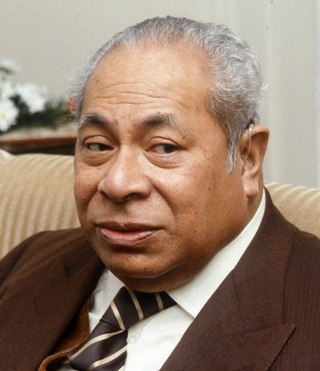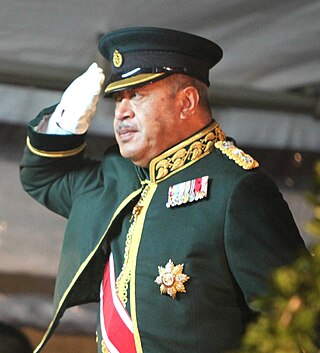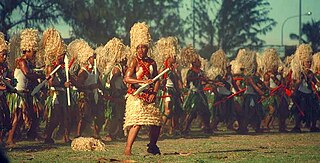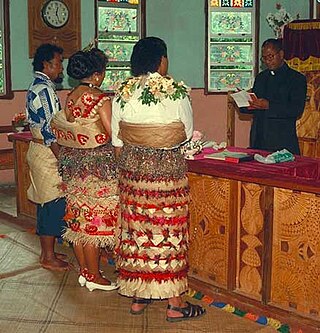
A funeral is a ceremony connected with the final disposition of a corpse, such as a burial or cremation, with the attendant observances. Funerary customs comprise the complex of beliefs and practices used by a culture to remember and respect the dead, from interment, to various monuments, prayers, and rituals undertaken in their honour. Customs vary between cultures and religious groups. Funerals have both normative and legal components. Common secular motivations for funerals include mourning the deceased, celebrating their life, and offering support and sympathy to the bereaved; additionally, funerals may have religious aspects that are intended to help the soul of the deceased reach the afterlife, resurrection or reincarnation.
Shiva is the week-long mourning period in Judaism for first-degree relatives. The ritual is referred to as "sitting shiva" in English. The shiva period lasts for seven days following the burial. Following the initial period of despair and lamentation immediately after the death, shiva embraces a time when individuals discuss their loss and accept the comfort of others.

The history of Tonga is recorded since the ninth century BC, when seafarers associated with the Lapita diaspora first settled the islands which now make up the Kingdom of Tonga. Along with Fiji and Samoa, the area served as a gateway into the rest of the Pacific region known as Polynesia. Ancient Tongan mythologies recorded by early European explorers report the islands of 'Ata and Tongatapu as the first islands having been hauled to the surface from the deep ocean by Maui.

Mourning is the expression of an experience that is the consequence of an event in life involving loss, causing grief. It typically occurs as a result of someone's death, often someone who was loved, although loss from death is not exclusively the cause of all experience of grief.

Tāufaʻāhau Tupou IV was King of Tonga from 1965 until his death in 2006. He was the tallest and heaviest Tongan monarch, weighing 209.5 kg (462 lb) and measuring 196 cm.
Tuʻi Kanokupolu (chiefs) are a junior rank of the Haʻa Tuʻi in Tonga.

George Tupou V was the King of Tonga from the death of his father Tāufaʻāhau Tupou IV in 2006 until his own death six years later.

The Tongan archipelago has been inhabited for perhaps 3,000 years, since settlement in late Lapita times. The culture of its inhabitants has surely changed greatly over this long time period. Before the arrival of European explorers in the late 17th and early 18th centuries, the Tongans were in frequent contact with their nearest Oceanic neighbors, Fiji and Samoa. In the 19th century, with the arrival of Western traders and missionaries, Tongan culture changed dramatically. Some old beliefs and habits were thrown away and others adopted. Some accommodations made in the 19th century and early 20th century are now being challenged by changing Western civilization. Hence Tongan culture is far from a unified or monolithic affair, and Tongans themselves may differ strongly as to what it is "Tongan" to do, or not do. Contemporary Tongans often have strong ties to overseas lands. They may have been migrant workers in New Zealand, or have lived and traveled in New Zealand, Australia, or the United States. Many Tongans now live overseas, in a Tongan diaspora, and send home remittances to family members who prefer to remain in Tonga. Tongans themselves often have to operate in two different contexts, which they often call anga fakatonga, the traditional Tongan way, and anga fakapālangi, the Western way. A culturally adept Tongan learns both sets of rules and when to switch between them.
Bereavement in Judaism is a combination of minhag (traditions) and mitzvah (commandments) derived from the Torah and Judaism's classical rabbinic literature. The details of observance and practice vary according to each Jewish community.

The Tuʻi Tonga Empire, or Tongan Empire, are descriptions sometimes given to Tongan expansionism and projected hegemony in Oceania which began around 950 CE, reaching its peak during the period 1200–1500.

A kiekie is a Tongan dress, an ornamental girdle around the waist, mainly worn by women on semiformal occasions, but nowadays also sometimes by men. At highly formal occasions both gender will settle for a taʻovala. At casual occasions no girdle is needed for any gender, although women may continue wearing a kiekie even then, as it is considered an easy sitting, nice looking decoration, with which one can show off..

A taʻovala is an article of Tongan dress, a mat wrapped around the waist, worn by men and women, at all formal occasions, much like the tie for men in the Western culture. The ta'ovala is also commonly seen among the Fijian Lau Islands, and Wallis island, both regions once heavily influenced by Tongan hegemony and cultural diffusion.
Tuʻi-tā-tui(translation: The king who strikes the knee) was the 11th king of the Tuʻi Tonga, a dynasty in Tonga, who lived during the 12th century AD.

Malaʻekula or Malaʻe Kula is the proper name of the royal burial grounds in central Nukuʻalofa in the Kingdom of Tonga in the southern Pacific Ocean. The kings of Tonga and their very close relatives are buried there. Those who are a little farther away from the mainline are buried elsewhere, in other chiefly cemeteries. Kings from older times,, are mostly buried in the langi in Muʻa.

An ʻie tōga is a special finely woven mat that is an important item of cultural value in Samoa. They are commonly referred to in English as "fine mats" although they are never used as mats as they only have a purely cultural value. ʻIe tōga are valued by the quality of the weave and the softness and shine of the material. They are made by women and form an important part of their role, identity and skill in their community.
Princess 'Elisiva Fusipala Tauki'onetuku Tuku'aho Vaha'i of Tonga, normally referred to as Princess Fusipala or even just Fusipala, was a daughter of Fatafehi Tuʻipelehake. Fusipala was one of the Tuʻi Pelehake's six children, four of whom were girls.
Tongan kava ceremonies play an integral part of Tongan society and governance. They range in formality, from informal “faikava” or kava “parties” to the highly stratified, ancient, and ritualized Taumafa Kava, or Royal Kava Ceremony. Tongan kava ceremonies continue to permeate Tongan society both in Tonga and diaspora. Their cultural importance includes strengthening cultural values and principles, while solidifying traditional ideals of duty and reciprocity, reaffirming societal structures, and entrenching the practice of pukepuke fonua, or tightly holding on to the land, a Tongan cultural ideal to maintain, preserve, and live traditional Tongan culture.
Tupoumoheofo was 12th Tu'i Kanokupolu of Tonga, and the only female to ever hold that title. She was the principal wife to the Tu'i Tonga though she may have been of higher social rank than him because of her matrilineal descent. After a vacancy in the Tu'i Kanokupolu title, she used her status to designate herself successor, reigning on Tongatapu for slightly less than one year starting in perhaps 1792 before being forcibly deposed by her distant relative Tuku’aho. Tupoumoheofo retreated to retirement in the northern Tongan Island of Vava’u under the protection of the 'Ulukalala family.

Ancient Greek funerary practices are attested widely in literature, the archaeological record, and in ancient Greek art. Finds associated with burials are an important source for ancient Greek culture, though Greek funerals are not as well documented as those of the ancient Romans.

Chinese funeral rituals comprise a set of traditions broadly associated with Chinese folk religion, with different rites depending on the age of the deceased, the cause of death, the deceased's marital and social statuses. Different rituals are carried out in different parts of China, many contemporary Chinese people carry out funerals according to various religious faiths such as Buddhism or Christianity. However, in general, the funeral ceremony itself is carried out over seven days, and mourners wear funerary dress according to their relationship to the deceased. Traditionally, white clothing is symbolic of the dead, while red is not usually worn, as it is traditionally the symbolic colour of happiness worn at Chinese weddings. The number three is significant, with many customary gestures being carried out three times.














